Cost is still a major limiting factor for low-carbon energy technologies. What if consumers were able to fund these technologies just by trying out some new and exciting entertainment experiences? The Energy Pilots, the project that Elliott P. Montgomery is presenting right now at the graduation show of Design Interactions at RCA (god, i really need to write about other schools once in a while), is a research program that develops hypothetical business models by borrowing proven techniques from other sectors, and adapting them to fit the financial challenges of specific low-carbon technologies.
The introduction video below explains the premise of the research initiative:
The research has been presented -as much as performed- at the Sparks Energy Symposium and at the Responsible Business Conference in 2011, catalysing a discussion around the future of energy business and the associated implications. The next presentation of the project is going to be decidedly corporate as Montgomery will be submitting his ideas to Shell. The designer’s speculative devices are also demonstrated in public spaces to raise a discussion about the viability and social implications of these theoretical strategies. Some of them are purely provocative. Others, in particular the Extreme Tourism Model, are rather seductive.
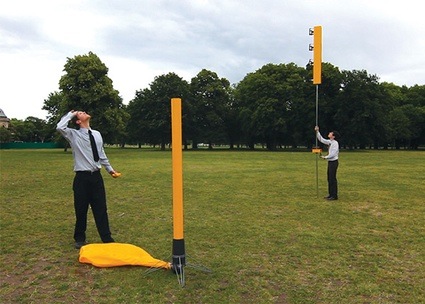 Research devices in use
Research devices in use
While Richard Branson plans to send passengers above the atmosphere, Montgomery’s Extreme Tourism Model follows Jules Verne’s A Journey to the Centre of the Earth by offering thrill-seekers the possibility to travel deep into the crust of the Earth and witness its geological wonders.
The deepest hole in the Earth so far is the TauTona Mine, near Johannesburg. The gold mine reaches some 3.9 km (2.4 mi) underground. The Extreme Tourism Model will travel 5 kilometers underground. The cost of a ticket to ‘the center of the Earth” would be slightly less elevated than the one for a trip aboard Virgin Galactic’s SpaceShip and will fund enhanced geothermal systems.
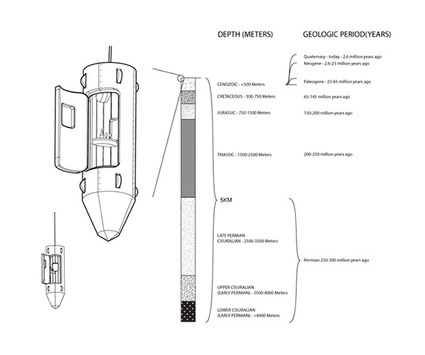
A second proposal, the Thrill Attraction Model would enable a solar energy company to attract customers by offering them a chance to win a prize each time the customer pays their energy bill. At the bottom of the customer’s bill would be a unique number. Within each billing cycle, one winning number would be selected, and the corresponding customer would win the jackpot.
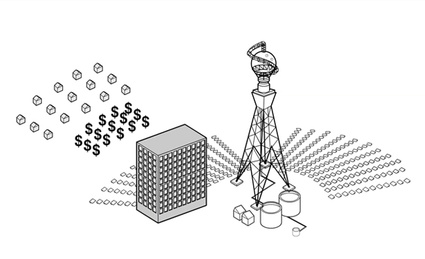
The thrill of winning money would be an incentive, helping consumers overcome their natural aversion to a higher priced energy service. If we aren’t always dependably altruistic, maybe simple cash would bring us to make greener choices.
A key part of the Thrill Attraction Model, the Solar Lottery Ball Tumbler device would be used to hold test lotteries, in public spaces, as a way to study the model, to see whether people would be interested, but also to discuss the ethics of this possibly manipulative technique.
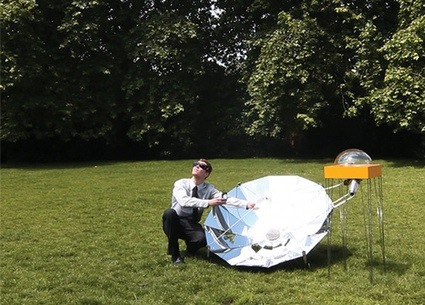 A representative device – the Solar Lottery Ball Tumbler – is used to discuss the Thrill Attraction Model in the public domain
A representative device – the Solar Lottery Ball Tumbler – is used to discuss the Thrill Attraction Model in the public domain
Much more appealing to corporations, the Advertising Capital Model aims to generate additional revenue by advertising using the energy infrastructure. 100m high wind turbines outfitted with smoke printing nozzles would spell out advertisement messages into the sky. The fees for these advertisements would help to finance additional wind farm construction.
This is what it would look like in theory:
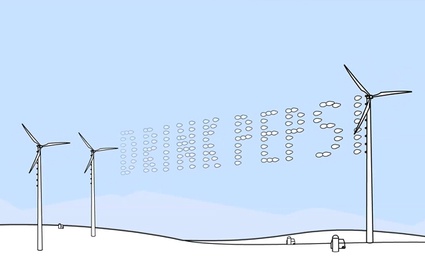
And this is the state of the system right now:
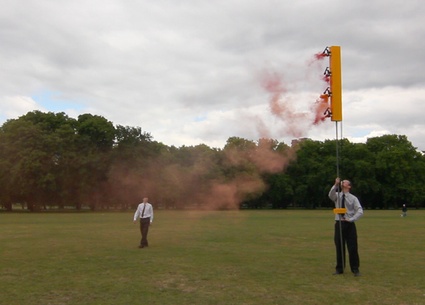 A rough 4.5m tall prototype of the Advertising Capital Model is demonstrated and studied in public spaces
A rough 4.5m tall prototype of the Advertising Capital Model is demonstrated and studied in public spaces
Finally, the Alternate Service Model is a solar updraft tower tailored to the needs of a company developing a new solar technology.
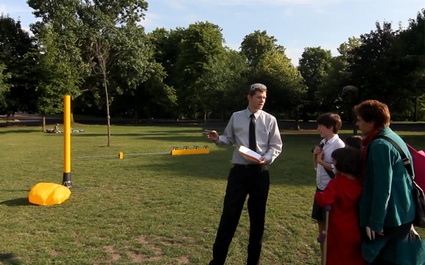 The Updraft Replicator used to test drive the Alternate Service Model
The Updraft Replicator used to test drive the Alternate Service Model
The tower would allow people to launch objects into the sky using the vertical gust from the plant. An Updraft Replicator is used to study this model. So far, people interrogated about this new entertainment service have expressed the desire to send seeds or the ashes of their pets up in the clouds.
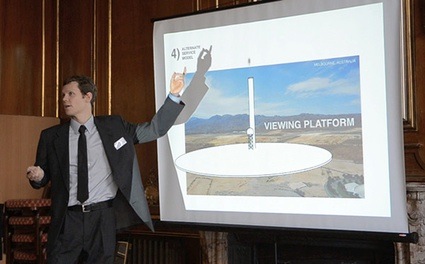 Presentation at the Sparks Energy Symposium
Presentation at the Sparks Energy Symposium
Check out The Energy Pilots at the Royal College of Art graduate exhibition until 3 July 2011 on Kensington Gore.
For other smoke systems: Smoke and Hot Air by Ali Momeni and Robin Mandel. See also SWAMP (Studies of Work Atmosphere and Mass Production)’s machine that blows miniature artificial house shaped clouds.
